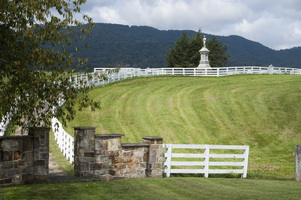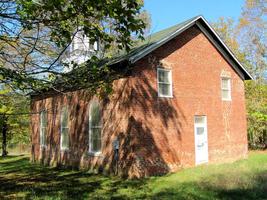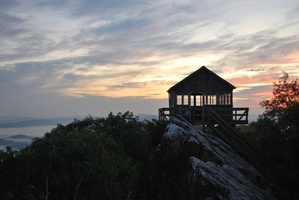 | Back to e-WV
| Back to e-WV
 The West Virginia Encyclopedia
The West Virginia Encyclopedia
 | Back to e-WV
| Back to e-WV
 The West Virginia Encyclopedia
The West Virginia Encyclopedia










Monroe was segmented from Greenbrier County against the objections of the mother county. Nevertheless, the Virginia General Assembly passed the bill to establish the new county on January 15, 1799. It was named for James Monroe, the newly inaugurated governor of Virginia and later president of the United States. In the future, 15 counties across the nation shared the name Monroe, but this was the first one and the only one that James Monroe himself signed into being.
Union was established by the Virginia legislature in 1800 to be the seat of government for newly established Monroe County.

Jefferson National Forest was established by President Roosevelt on April 21, 1936. The West Virginia portion of this forest contains 18,530 acres in Monroe County.
Moncove Lake, like other lakes in West Virginia, is a man-made impoundment. It was created by the damming in 1959 of Devil Creek in eastern Monroe County. The name was coined from ‘‘Mon,’’ the first three letters of the county name, and ‘‘cove,’’ referring to a small valley.
Sweet Springs is the site of a historic mineral spring resort in use since the late 1700s. St. John’s Chapel, one of the oldest Roman Catholic churches in West Virginia, is adjacent to the resort.

Rehoboth Church is believed to be the oldest church building west of the Allegheny Mountains.
Peters Mountain was probably named after Peter Wright, an early settler. A few miles of the Appalachian Trail follows the crest of the mountain, and also a small part of the Allegheny Trail. Peters Mountain is home to Hanging Rock Observatory, one of the best places in the state to watch migratory birds of prey.

Until World War I, Red Sulphur Springs was the site of a popular mineral spring resort.
Greenville Saltpeter Cave was mined for saltpeter during the Civil War. Greenville, listed as a National Natural Landmark in 1973, is not open to the public.
The soothing waters of Salt Sulphur Springs were discovered in 1805. A hotel was built there in 1820.